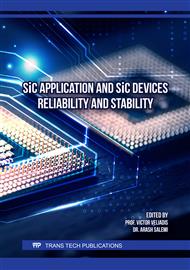p.49
p.57
p.67
p.73
p.79
p.87
p.97
p.107
p.115
Latching Current Limiter for High-Power Distribution in Space Enabled by SiC N-MOSFET
Abstract:
High power and high voltage distributions will be required in space, but the necessary latching current limiters to manage the loads are not feasible with current Si P-MOSFET technology in the required power and voltage range. The generated losses and the number of parallel components make the system performance unacceptable. SiC N-MOSFETs are proposed as an alternative, due to their superior current ratings, reduced conduction resistance and increased thermal limits. Using these characteristics, two preliminary designs are proposed with SiC N-MOSFETs, one to optimize the power losses in the nominal operation and the other to reduce the required number of parallel devices and increase the allowable time under fault of the system. Both configurations overcome the challenges brought by the high power and high voltage distributions in space, reducing the losses and the complexity of the system while increasing the time under fault. This work shows how SiC technology can enable high power and high voltage distribution in space, while highlighting the importance of high power packages and thermal characteristics in certain applications.
Info:
Periodical:
Pages:
115-121
Citation:
Online since:
September 2025
Authors:
Keywords:
Permissions:
Share:
Citation:


